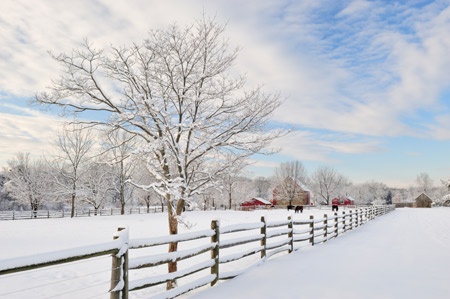Wheat Futures Fall as U.S. Northern Plains Snow May Boost Crop Outlook
Category: Grains
 (Bloomberg) – Wheat futures slid from a four-week high on speculation that winter storms in the northern U.S. will boost soil moisture before farmers begin planting spring crops in the next two months.
(Bloomberg) – Wheat futures slid from a four-week high on speculation that winter storms in the northern U.S. will boost soil moisture before farmers begin planting spring crops in the next two months.
Storms in the past two days brought as much as 8 inches (20 centimeters) of snow to parts of North Dakota, the biggest U.S. grower of spring wheat, while accumulations reached 12 inches in Minnesota, according to the National Weather Service. Conditions in the two states ranged from “severe” drought to “abnormally dry” as of Feb. 21, after months of below-normal precipitation, according to the University of Nebraska at Lincoln.
“Moisture this time of year is good,” Dan Kuechenmeister, the manager of the commodity department at RBC Wealth Management in Minneapolis, said in a telephone interview. “It’s a good, wet, heavy snow, so even if it gets windy, it shouldn’t blow around too much. It’ll get a chance to settle in, and hopefully soak into the ground.”
Wheat futures for May delivery fell 0.25 cent to settle at $6.68 a bushel at 1:15 p.m. on the Chicago Board of Trade. Earlier, the price reached $6.745, the highest for a most-active contract since Feb. 1. The commodity, little changed this month, is down 18 percent in the past year on rising global supplies.
Hedge funds and other large speculators were net-short 57,266 wheat futures and options contracts as of Feb. 21, the biggest bearish position since at least 2006, U.S. Commodity Futures Trading Commission data show.
Wheat futures rose as much as 0.9 percent today before retreating, signaling funds may be buying contracts to close out short positions after prices touched a four-week low last week, said Jamey Kohake, a broker at Paragon Investments.
“The wheat market got a little bit overextended to the downside, with record short positions,” he said by telephone from Silver Lake, Kansas. “We’re starting to see that shift.”
Wheat is the fourth-largest U.S. crop, valued at $14.4 billion in 2011, behind corn, soybeans and hay, government data show.
To contact the reporter on this story: Whitney McFerron in Chicago at wmcferron1@bloomberg.net
To contact the editor responsible for this story: Steve Stroth at sstroth@bloomberg.net




